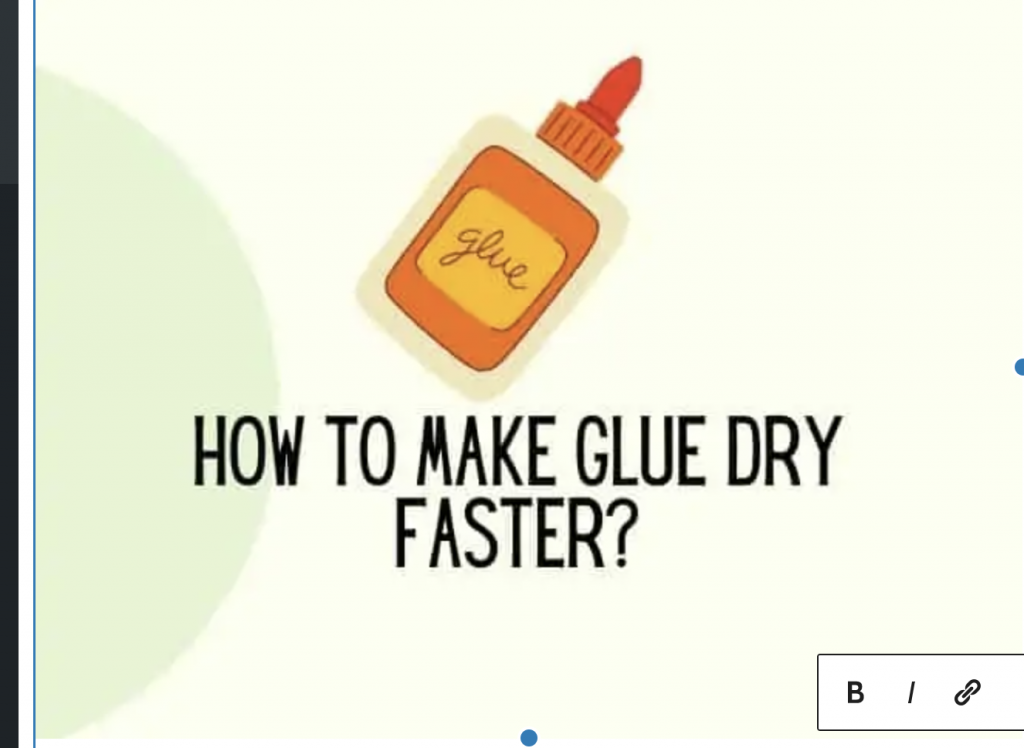The aroma of freshly cut wood fills the air, tantalizing your senses as you eagerly embark on your woodworking project. With meticulous care, you carefully spread wood glue onto the mating surfaces, anticipating the moment when your creation will take shape. But then, reality sets in – the wait for the glue to dry can feel like an eternity. Fortunately, there are innovative techniques that can significantly reduce this downtime, allowing you to witness the fruits of your labor sooner rather than later.

Image: 5ws.wiki
Wood glue, an indispensable ally in the world of carpentry, forms a strong bond between wood surfaces through a chemical reaction called cross-linking. During this process, the glue’s molecules entangle with the wood fibers, creating a durable and long-lasting connection. However, the pace of this reaction can be frustratingly slow, leaving you twiddling your thumbs. Fear not, fellow woodworker! This comprehensive guide will unlock the secrets to accelerating the drying time of wood glue, empowering you to expedite your projects and unleash your creative potential.
Unveiling the Factors that Influence Drying Time
Before delving into the strategies for accelerating the drying process, it’s essential to understand the factors that prolong it. Temperature, humidity, wood type, glue thickness, and joint design all play a role in determining how long you’ll have to exercise patience.
-
Temperature: Wood glue thrives in warm environments. Chilly temperatures slow down the curing process, while warmer conditions encourage a more rapid reaction. Aim for a room temperature of around 70 degrees Fahrenheit (21 degrees Celsius) for optimal drying.
-
Humidity: High humidity levels can hinder the drying process by preventing the evaporation of water from the glue. Aim for a humidity level of around 50% for the best results.
-
Wood Type: Different wood species have varying densities, which affects how quickly they absorb glue. Denser woods tend to absorb less glue and dry faster, while less dense woods absorb more glue and dry more slowly.
-
Glue Thickness: Thicker layers of glue take longer to dry than thinner layers. Apply a thin, even coat of glue to minimize drying time and ensure a strong bond.
-
Joint Design: Joints that allow for airflow promote faster drying. Avoid creating tight-fitting joints that trap moisture and impede evaporation.
Accelerating Techniques: Your Arsenal of Time-Savers
Now that you’re armed with knowledge about the factors that influence drying time, let’s explore the techniques that will give your wood glue a turbo boost:
-
Apply Heat: Moderate heat can dramatically accelerate the drying process. Use a heat gun or hair dryer to gently warm the glued joint, keeping the temperature below 140 degrees Fahrenheit (60 degrees Celsius) to avoid damaging the wood or glue.
-
Reduce Humidity: If your workshop is particularly humid, consider using a dehumidifier to reduce moisture levels and create a more favorable environment for drying.
-
Increase Airflow: Position a fan near the glued joint to increase airflow and promote evaporation. Avoid using too strong a fan, as this could blow away the glue or disturb the joint.
-
Use Fast-Drying Glue: Opt for fast-drying wood glues specially formulated to cure quickly. These glues typically contain solvents that evaporate rapidly, reducing drying time significantly.
-
Apply Pressure: Applying pressure to the glued joint can help press out excess glue and promote a tighter bond. Use clamps or weights to maintain pressure while the glue dries.
Expert Advice for Impeccable Results
In the realm of woodworking, experience is a priceless asset. Seasoned woodworkers have honed their techniques over countless projects, unlocking the secrets to achieving impeccable results. Let’s glean from their wisdom:
-
“Always test the glue on a scrap piece of wood before applying it to your project. This will ensure that you’re using the right glue for the job and that it’s drying as expected.” – John, Master Carpenter
-
“Don’t overglue! Using too much glue can actually weaken the bond and extend drying time. Apply a thin, even coat to achieve optimal results.” – Mary, Woodworking Enthusiast
-
“Patience is a virtue, especially when working with wood glue. Give the glue ample time to dry before putting any stress on the joint. Rushing the process can compromise the strength of the bond.” – Tom, Hobbyist Woodworker
Image: www.quora.com
How To Make Wood Glue Dry Faster
Conclusion: Empowering You to Conquer Time
With the knowledge and techniques outlined in this article, you possess the power to accelerate the drying process of wood glue, unlocking the potential for faster completion of your woodworking projects. Remember to consider the factors that influence drying time and employ the appropriate strategies to expedite the process. By embracing the insights of experts and practicing patience, you’ll transform yourself into a woodworking maestro capable of creating stunning masterpieces with remarkable efficiency. As you embark on your next project, may the art of woodworking bring you joy, fulfillment, and a profound sense of accomplishment.







